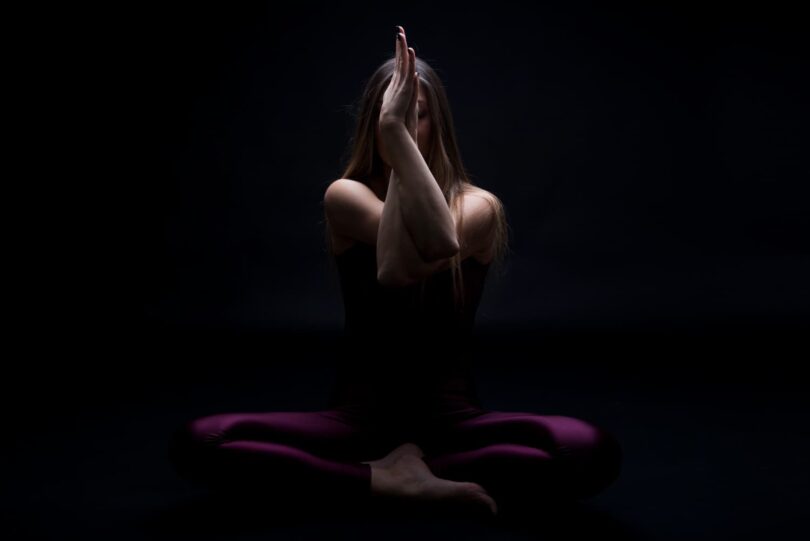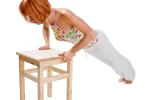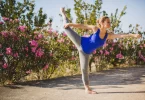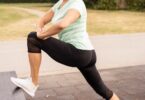Table of Contents
Introduction
In today’s fast-paced world, finding time for self-care and mindfulness is essential. One effective way to achieve this is through somatic yoga, specifically focusing on hip-opening exercises. A 30-minute somatic yoga hip-opening flow not only helps improve flexibility but also relieves pain and reduces stress. This article will guide you through a detailed flow, from preparation to post-practice relaxation, ensuring you get the most out of your session.
Introduction to Somatic Yoga
Introduction to Somatic Yoga
Somatic yoga emphasizes the internal experience of movement and posture. Unlike traditional yoga, which often focuses on achieving the perfect pose, somatic yoga encourages awareness of sensations in the body. This mindful approach helps release chronic tension, improves movement patterns, and promotes overall well-being.
Benefits of Hip-Opening Yoga
Practicing hip opening yoga offers numerous benefits. Physically, it enhances hip flexibility and range of motion, which is crucial for overall mobility. Additionally, it helps alleviate lower back pain and reduces the risk of injuries. Mentally and emotionally, hip opening poses can facilitate the release of stored stress and emotions, leading to a sense of calm and relaxation.
Understanding Somatic Yoga
What is Somatic Yoga?
Somatic yoga is a practice that combines traditional yoga poses with somatic movements, focusing on the internal experience rather than the external appearance. Originating from the work of Thomas Hanna, it emphasizes slow, mindful movements to improve body awareness and release muscular tension. The principles of somatic yoga include listening to the body, moving gently, and paying attention to the sensations experienced during each movement.
Differences Between Somatic Yoga and Traditional Yoga
While traditional yoga often aims for precision in poses, somatic yoga prioritizes the experience of the movement. Traditional yoga may focus on flexibility and strength, whereas somatic yoga emphasizes awareness and ease of movement. In somatic yoga, there is less emphasis on achieving a particular pose and more on understanding how your body feels as you move. This difference makes somatic yoga accessible to a broader range of people, including those with chronic pain or limited mobility.
The Importance of Hip-Opening
Anatomy of the Hips
Understanding the anatomy of the hips can help you appreciate the importance of hip-opening exercises. The hip joint is a ball-and-socket joint that allows for a wide range of motion. It’s surrounded by several muscles, including the hip flexors, extensors, abductors, and adductors. Tightness in these muscles can lead to reduced mobility and discomfort. Common issues related to hip tightness include lower back pain, hip pain, and even knee problems.
Benefits of Hip Opening
Practicing hip-opening exercises can lead to significant benefits. First, it increases flexibility and improves range of motion, making everyday activities easier. Second, it helps alleviate lower back pain by addressing the root cause of the tightness. Additionally, hip-opening exercises can release stored emotions and stress, promoting mental and emotional well-being.
Improved Flexibility: Somatic yoga helps increase flexibility and range of motion by focusing on gentle movements. For more on improving flexibility, check out our guide on 7 Yoga Poses for Beauty.
The 30-Minute Hip Opening Flow
Preparation for the Flow
Before diving into the 30-minute somatic yoga hip opening flow, it’s essential to set the stage for a comfortable and effective practice. Begin by finding a quiet, comfortable space where you won’t be disturbed. Gather any necessary equipment, such as a yoga mat, bolster, or blocks. These props can assist you in maintaining proper alignment and comfort during the poses.
Start with a gentle warm-up to prepare your body. Simple movements like cat-cow stretches, gentle hip circles, and a few minutes of mindful breathing can help to loosen up your joints and muscles. This warm-up phase is crucial for preventing injury and maximizing the benefits of the yoga flow.
Detailed 30-Minute Hip Opening Flow
This 30-minute sequence is designed to open your hips gently and effectively. Follow these steps for a mindful and beneficial practice.
Child’s Pose (Balasana) – 3 Minutes
Begin in Child’s Pose to ground yourself and start focusing on your breath. Spread your knees wide while keeping your big toes touching. Extend your arms forward and rest your forehead on the mat. Breathe deeply, feeling your hips start to release tension.
Cat-Cow Pose (Marjaryasana-Bitilasana) – 2 Minutes
Transition to all fours for Cat-Cow Pose. As you inhale, drop your belly and lift your gaze and tailbone (Cow Pose). Exhale, round your spine, and tuck your chin to your chest (Cat Pose). Move slowly, synchronizing your breath with each movement.
Low Lunge (Anjaneyasana) – 4 Minutes (2 Minutes Each Side)
Step your right foot forward into a Low Lunge. Ensure your knee is directly above your ankle. Lower your left knee to the mat and reach your arms overhead. Hold and breathe deeply for 2 minutes, then switch sides.
Lizard Pose (Utthan Pristhasana) – 4 Minutes (2 Minutes Each Side)
From the Low Lunge, bring both hands inside your right foot and lower your elbows to the mat if possible. Hold for 2 minutes, breathing into the stretch. Switch sides after 2 minutes.
Pigeon Pose (Eka Pada Rajakapotasana) – 4 Minutes (2 Minutes Each Side)
Move into Pigeon Pose by bringing your right knee towards your right wrist and extending your left leg back. Keep your hips square and fold forward, resting your forehead on the mat or a block. Hold for 2 minutes on each side, focusing on releasing tension in your hips.
Butterfly Pose (Baddha Konasana) – 3 Minutes
Sit up and bring the soles of your feet together, letting your knees fall out to the sides. Hold your feet with your hands and gently press your knees towards the floor. Sit tall and breathe deeply for 3 minutes.
Happy Baby Pose (Ananda Balasana) – 3 Minutes
Lie on your back and draw your knees towards your chest. Hold the outsides of your feet with your hands and gently pull your knees towards the floor, opening your hips. Rock gently side to side for a soothing massage on your lower back. Stay in this pose for 3 minutes.
Reclined Bound Angle Pose (Supta Baddha Konasana) – 3 Minutes
Remain on your back and bring the soles of your feet together, letting your knees fall open to the sides. Place your hands on your belly or stretch them out to the sides. Close your eyes and relax in this pose for 3 minutes, focusing on your breath and the sensations in your hips.
Modifications and Variations
Modifications can make this flow more accessible for those new to yoga or dealing with tight hips. Use blocks or bolsters to support your hips and reduce strain. If you find certain poses challenging, don’t hesitate to take breaks or simplify the movements.
Deeper variations can intensify the stretch for advanced practitioners. In poses like Pigeon or Lizard, you can lower your body further or experiment with dynamic movements to increase the challenge.
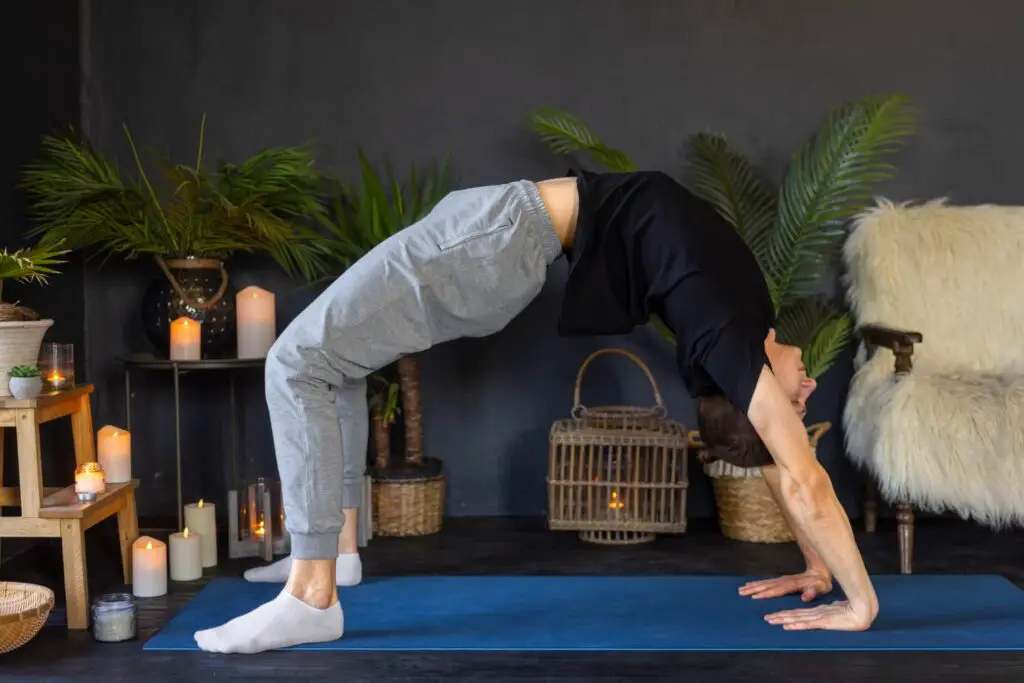
Post-Practice Considerations
Cool Down and Relaxation
After completing your 30-minute somatic yoga hip opening flow, it’s crucial to spend a few minutes cooling down and allowing your body to relax. A proper cool-down helps your muscles recover and prevents stiffness. Here are some simple cool-down poses to finish your practice:
Savasana (Corpse Pose) – 5 Minutes
Lie flat on your back with your legs extended and arms at your sides, palms facing up. Close your eyes and focus on your breath. Let your entire body relax, sinking into the mat. This final relaxation pose helps to integrate the benefits of your practice, promoting deep rest and recovery.
Legs Up the Wall Pose (Viparita Karani) – 3 Minutes
Move to a wall and sit with one side of your body against it. Swing your legs up the wall as you lie down on your back, forming an L shape with your body. This pose helps to drain any excess fluid from your legs, reduces swelling, and promotes relaxation. Hold for 3 minutes, breathing deeply.
Reflecting on Your Practice
Taking a moment to reflect on your practice can enhance your overall experience. Consider keeping a yoga journal to jot down your thoughts and feelings after each session. Reflecting on your practice can help you track your progress and set intentions for future sessions.
Journaling and Mindfulness Tips
- Write about sensations: Note any sensations or emotions that came up during your practice. This can help you become more aware of how your body and mind respond to different poses.
- Set intentions: Consider what you want to achieve in your next practice. Setting intentions can keep you focused and motivated.
- Practice gratitude: Take a moment to express gratitude for your body’s ability to move and for the time you dedicated to self-care.
Tracking Progress Over Time
Consistency is key in yoga practice. By regularly practicing the hip opening flow, you’ll notice improvements in your flexibility, strength, and mental clarity. Here are a few tips for tracking your progress:
- Take photos: Documenting your poses over time can help you see subtle changes in your flexibility and alignment.
- Measure your range of motion: Use a measuring tape or ruler to track improvements in your hip flexibility.
- Reflect on your feelings: Note any changes in your emotional and mental well-being. Yoga can profoundly affect stress levels, mood, and overall happiness.
Remember, the journey is just as important as the destination. Celebrate small victories and be patient with yourself.
FAQs
What is somatic flow yoga?
Somatic flow yoga combines traditional yoga poses with somatic movements, focusing on the internal experience of the body. This practice emphasizes gentle, mindful movements to increase body awareness and release tension. Unlike regular yoga, which often prioritizes achieving specific postures, somatic flow yoga encourages you to tune into your body’s sensations and move with ease.
Does somatic yoga really work?
Yes, somatic yoga has been found to be effective for many people. It helps improve flexibility, reduce chronic pain, and increase overall body awareness. By focusing on slow, mindful movements, somatic yoga can help reprogram the nervous system, leading to lasting changes in how the body moves and feels. Practitioners often report reduced stress levels, improved posture, and a greater sense of well-being.
What is hip-opening yoga?
Hip-opening yoga refers to a series of poses designed to stretch and strengthen the muscles around the hips. These poses help increase flexibility and range of motion in the hip joints, which can alleviate lower back pain and improve overall mobility. Hip-opening yoga is particularly beneficial for people who sit for long periods, as it helps counteract the effects of prolonged sitting.
What is the difference between regular yoga and somatic yoga?
The primary difference between regular yoga and somatic yoga lies in the approach and focus. Regular yoga often emphasizes achieving specific postures and can sometimes be physically demanding. On the other hand, somatic yoga prioritizes the internal experience of movement and body awareness. It involves slow, mindful movements that encourage relaxation and the release of tension. This makes somatic yoga more accessible to people of all fitness levels, including those with chronic pain or limited mobility.
Conclusion and Further Resources
Summary of Key Points
Practicing a 30-minute somatic yoga hip opening flow offers numerous benefits for both the body and mind. This practice improves hip flexibility and range of motion and helps alleviate lower back pain and reduce stress. Somatic yoga provides a gentle yet effective way to release tension and enhance overall well-being by focusing on mindful movements and body awareness.
Additional Resources and Recommendations
To continue your journey with somatic yoga and hip-opening practices, here are some valuable resources and recommendations:
- Books:
- “The Breathing Book” by Donna Farhi – A comprehensive guide to yoga breathing techniques that can enhance your practice.
- “Somatics: Reawakening The Mind’s Control Of Movement, Flexibility, And Health” by Thomas Hanna is an excellent resource for understanding the principles of somatic movement.
Final Thoughts
Embarking on a regular somatic yoga practice, especially focusing on hip opening, can bring profound changes to your physical health and emotional well-being. By dedicating just 30 minutes a day, you can experience increased flexibility, reduced pain, and a calmer mind. Remember to listen to your body, move mindfully, and enjoy the journey of self-discovery through yoga.
Embarking on a regular somatic yoga practice can bring significant improvements to your physical and mental well-being. For more resources, explore our articles on Gaiam Beginner Yoga Mat: Best Features, Reviews, and Tips.

